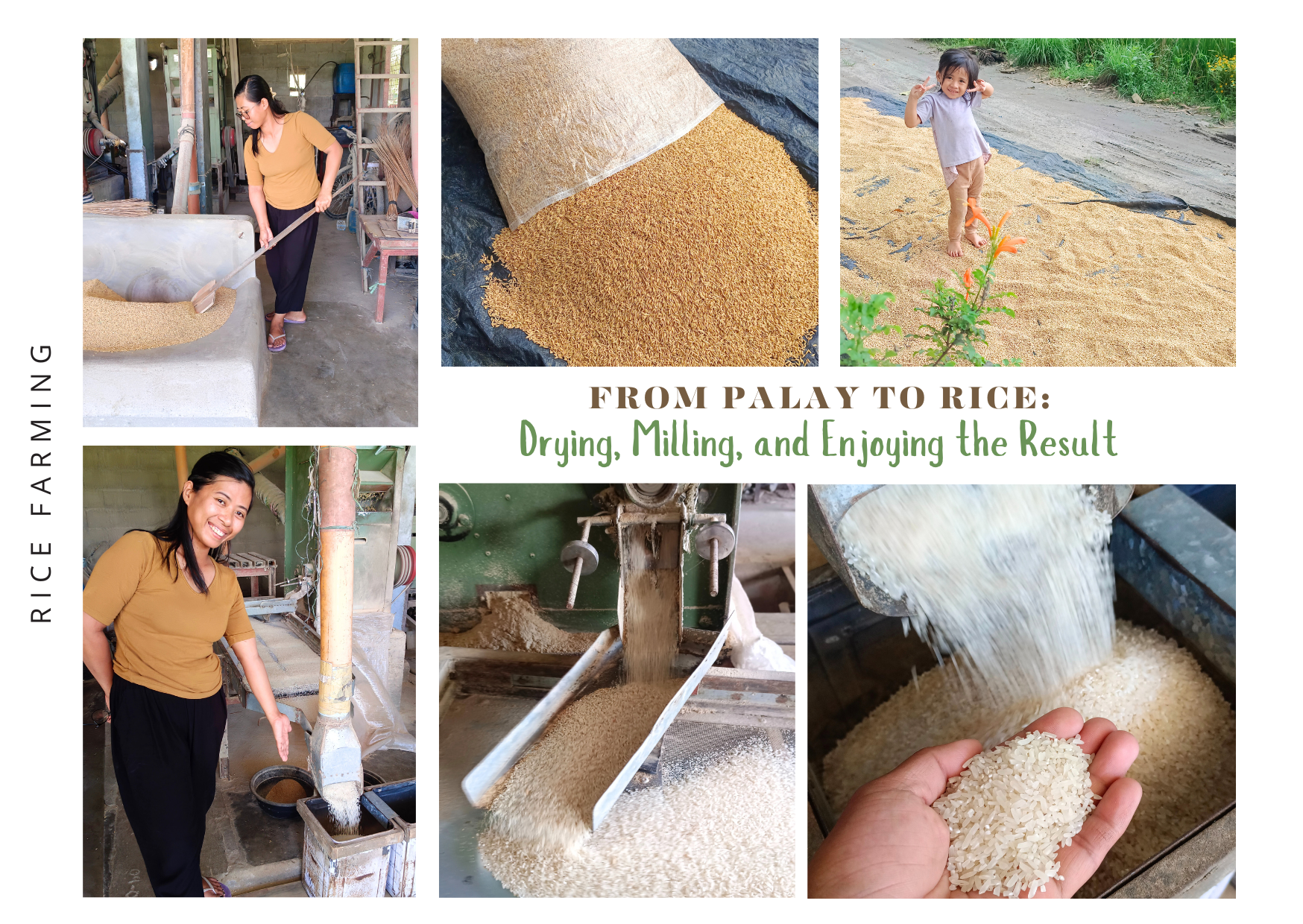
Hello, everyone! Today, I want to share something very close to our life here in the Philippines, Our simple harvesting experience. Rice is one of the most important crops on our country, and almost every Filipino family eats rice every single day. That is why growing, drying and milling rice is a big part of our culture and daily life. I hope you enjoy this little story about how our freshly harvested palay becomes the rice we proudly serve at home.

Just a few days after we harvested our rice farm, we immediately separated four sacks of palay. These sacks were the ones we planned to dry under the sun and later bring to the rice mill. I took photos of every step, starting from the drying process up to the moment the palay turned into rice, because I wanted to share how simple yet meaningful this activity is for us.
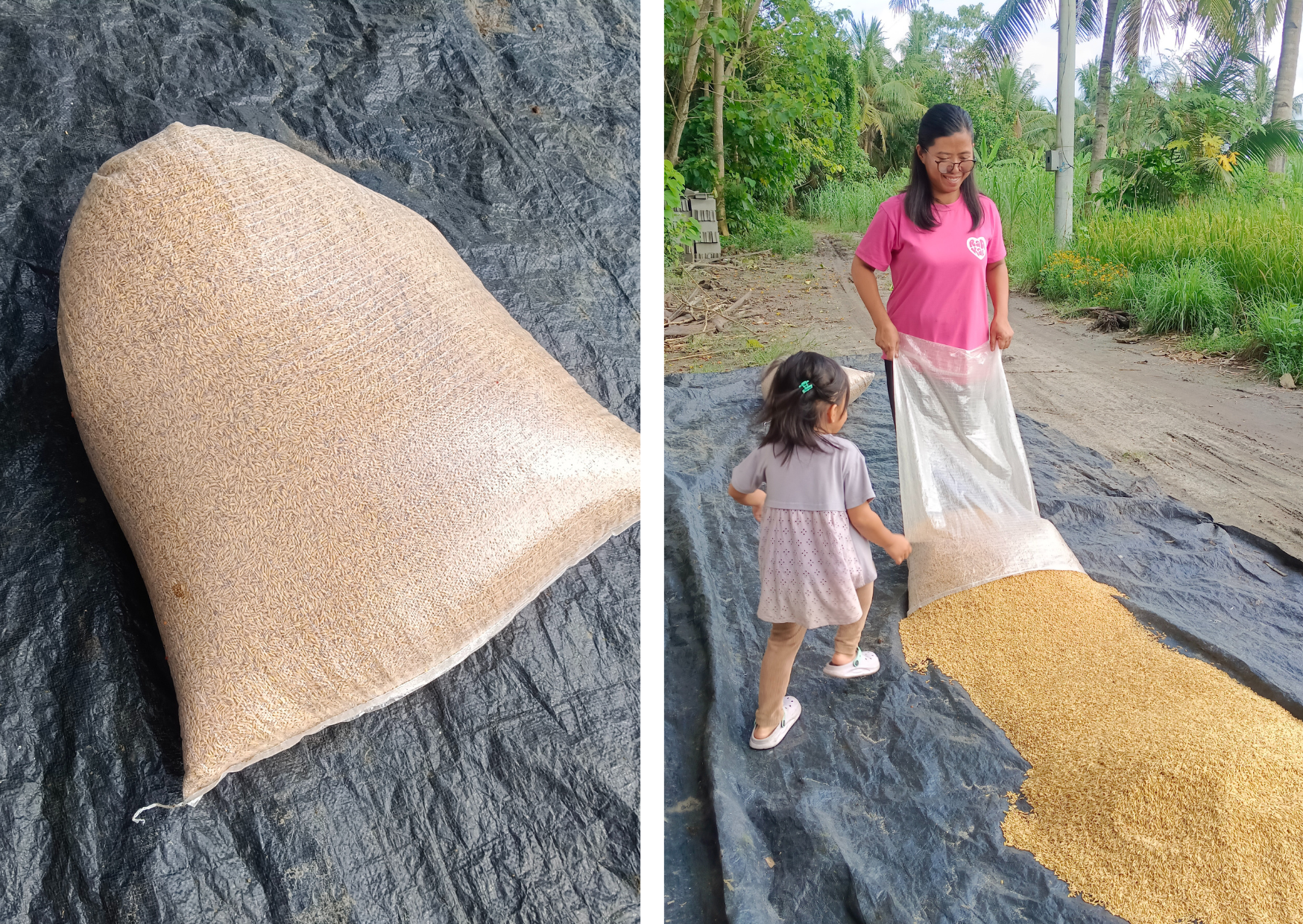
Since the sunlight in our farm was very bright and steady, we decided to dry the palay right away. My daughter helped me spread the palay on the mat, and for her, it was just like playing. She ran around, laughed and enjoyed helping, even if she thought everything was only a game. Moments like these make farm work more joyful, because children bring a different kind of happiness to our daily tasks.

After one whole day under the hot sun, the palay was completely dry and ready for milling. So, the next morning, we brought the sacks to the nearest rice mill, which is just a few minutes away from our farm house. Rice mills are common in the province, and they help farmers turn their dried palay into clean and fresh raie that is ready for cooking.
When we arrived at the mill, they placed our palay directly into the machine. What amazes me every time is how fast the machine works. As soon as the palay goes inside, white rice cones out, clean, smooth and ready to be cooked. It always feels like magic to see how something grown in our own field suddenly becomes the rice that fills our plates every day.
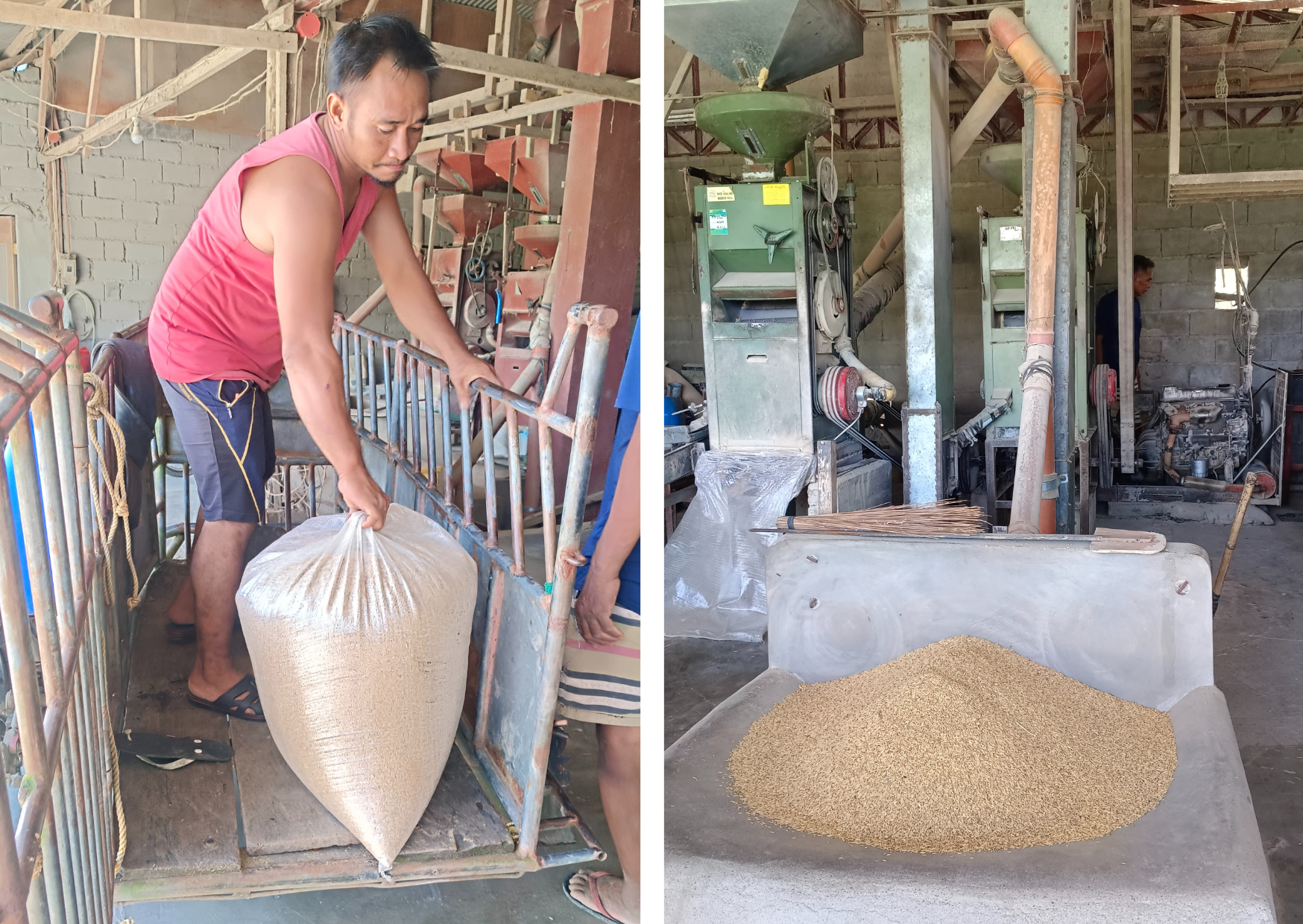
Aside from rice, we also get upa or rice bran which is the by - product of milling. This rice bran is very useful because we feed it to our ducks and pigs Nothing goes to waste, and that is one thing I love about farking it teaches us to value every part of the harvest.
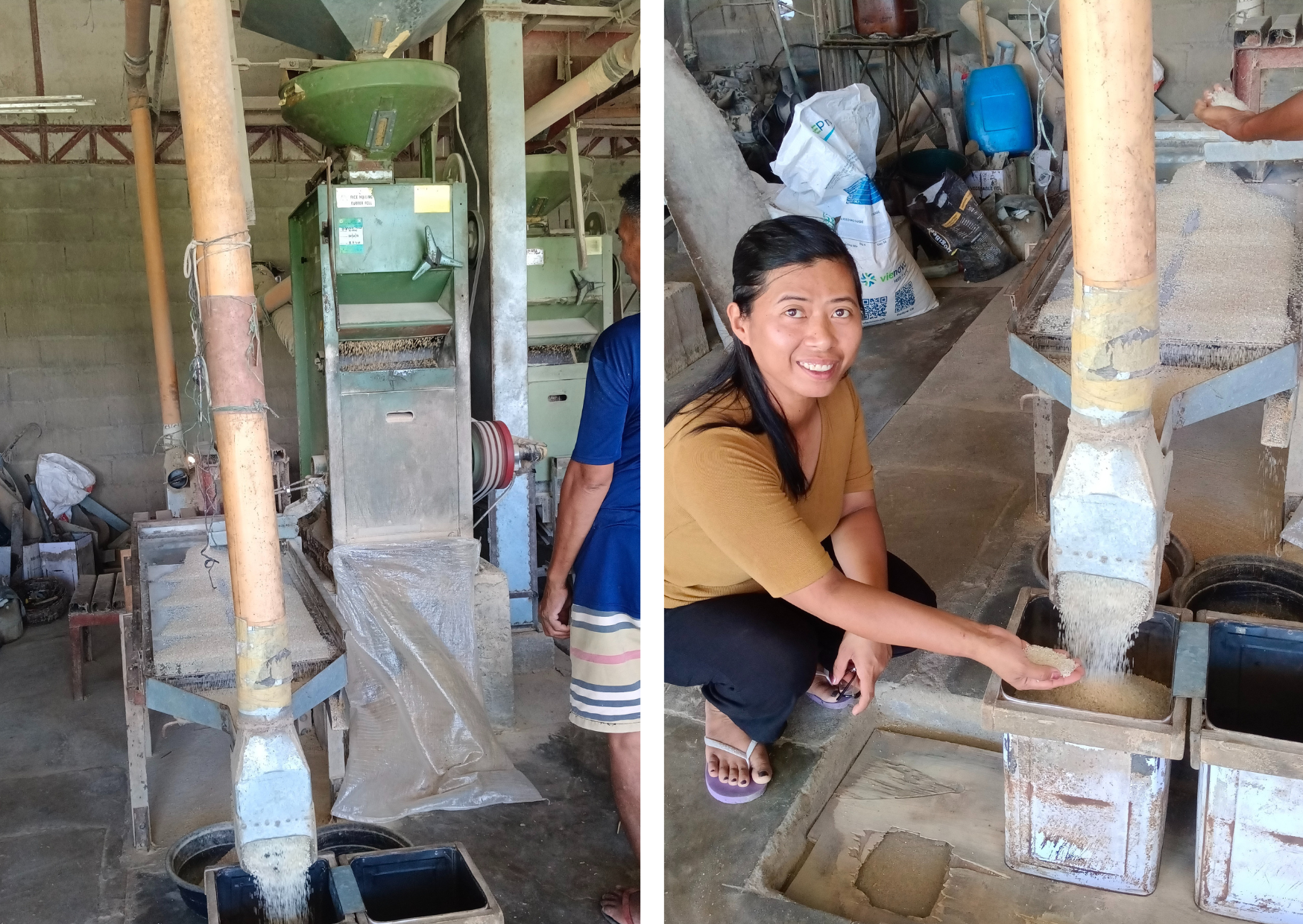
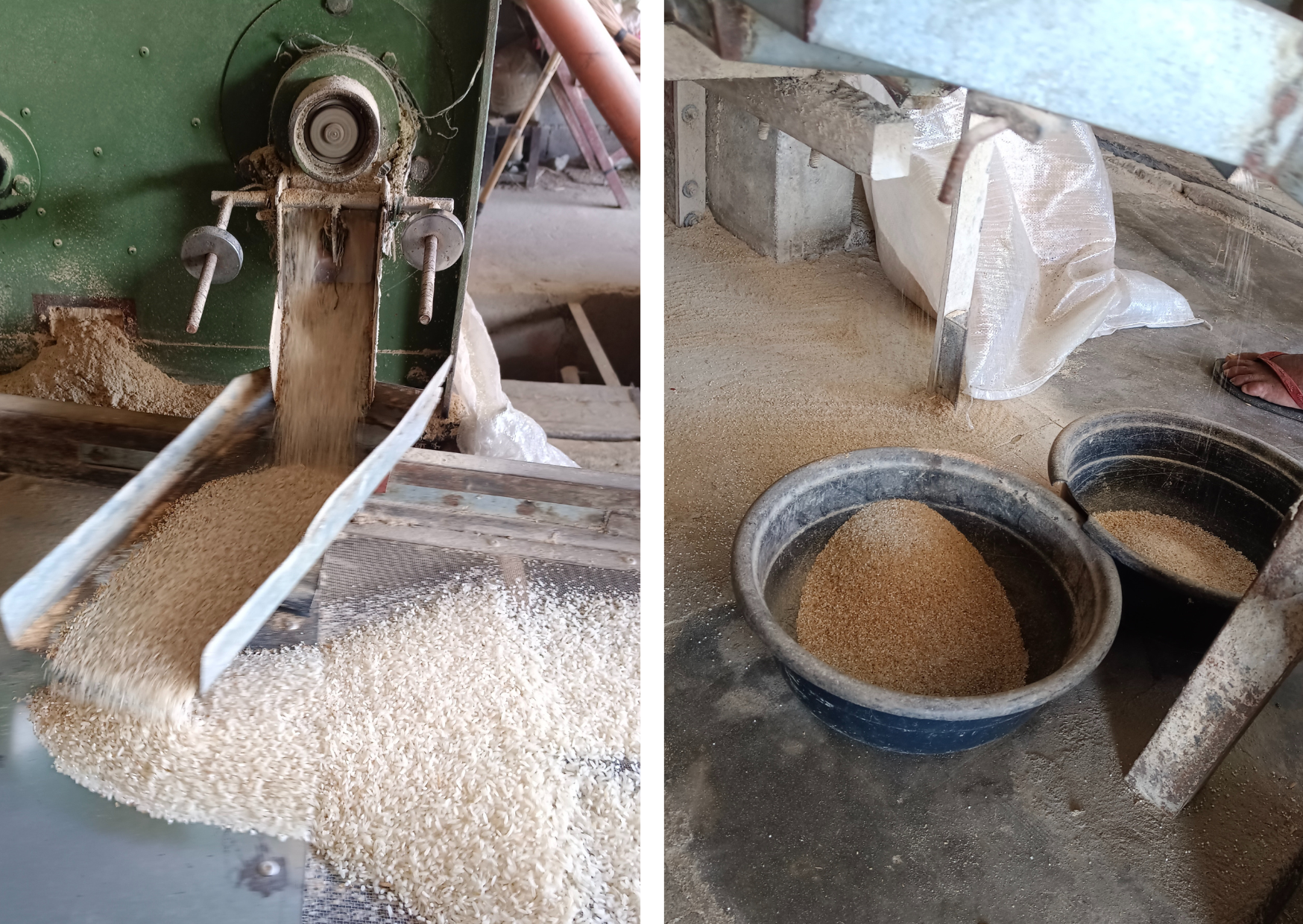
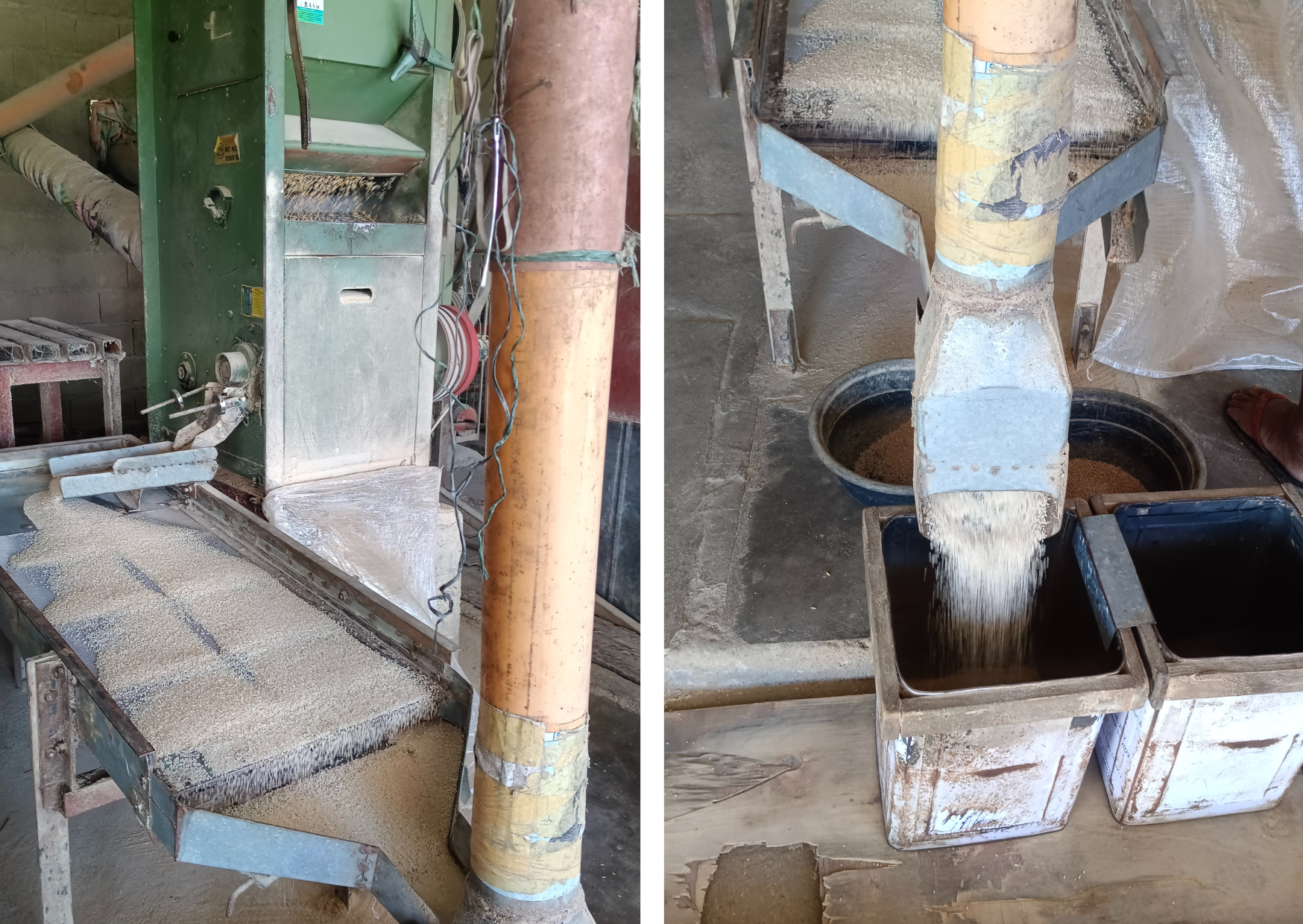
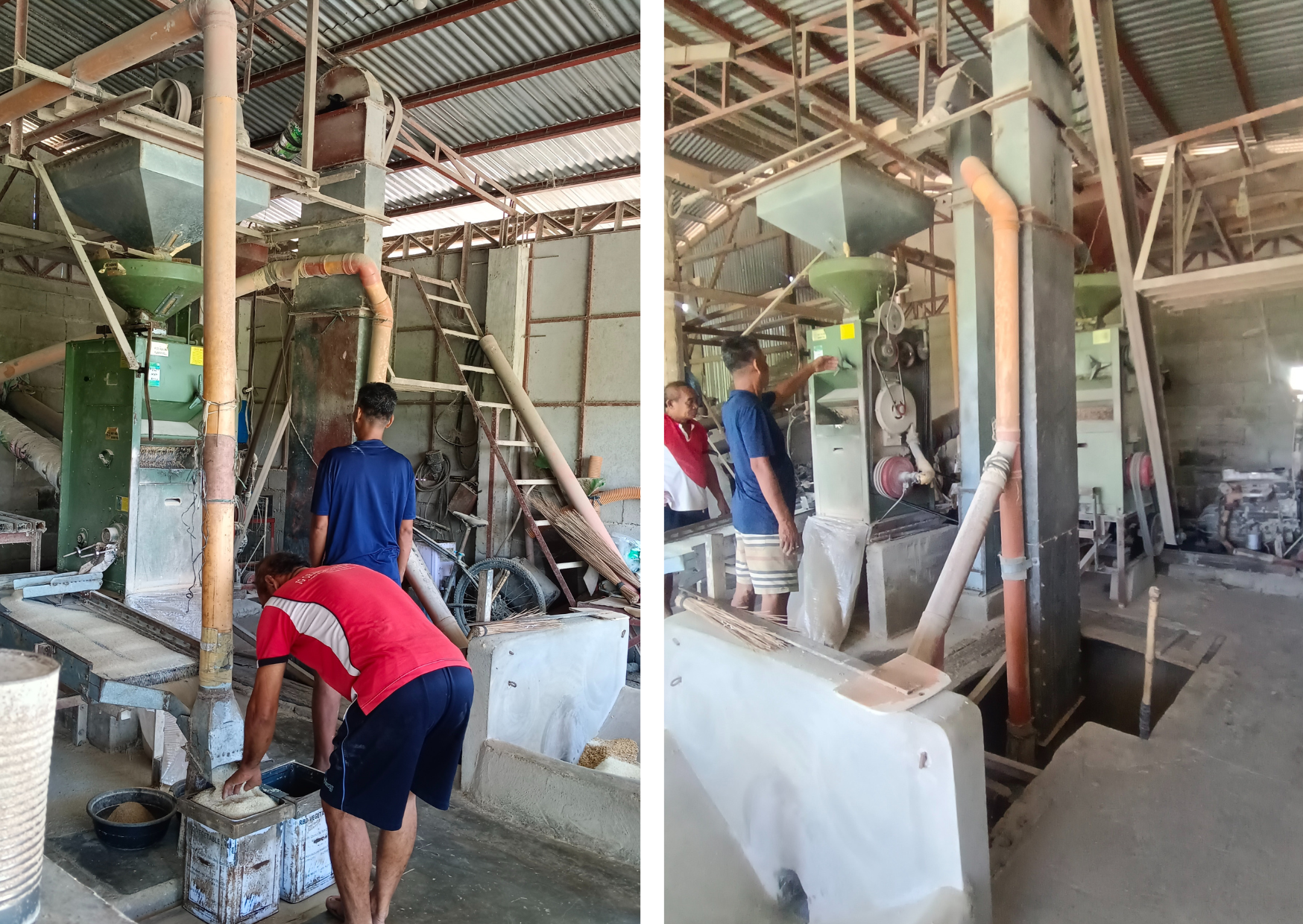
From our four sacks of dried palay, we ended up with there full sacs of rice. The remaining one sack became rice bran This is normal because not all palay grains turn into rice, some become husk or broken grains.
This simple process, from harvesting, drying to milling reminds me of how blessed we are to have our own rice field. It is hard work, yes, but it is also very rewarding. Seeing the rice come out of the machine makes all the effort worth it.

Thank you for reading my story! I hope this gives you a little glimpse of how rice is made here in the Philippines, from our farm to our table. 💛
(Photos are mine, edited in Canva).